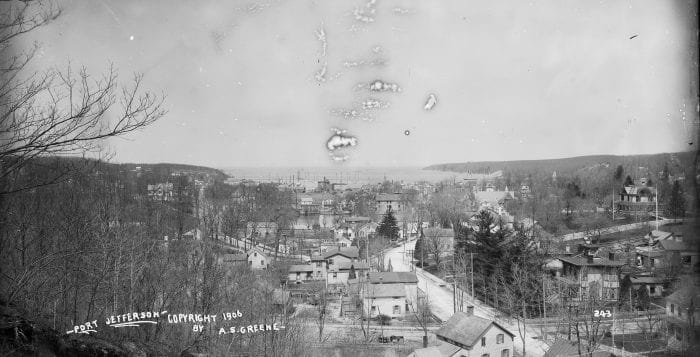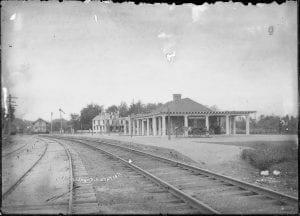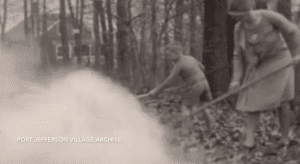Historians Lead Way in Digitizing Port Jeff History

Time destroys all things. Photos fade, film degrades, buildings crumble. To stop entropy and the inevitable march of time, local historians, both local and regional, have been working to digitize a number of vintage Port Jefferson films and photos for more people to enjoy.

Cold Spring Harbor-based Preservation Long Island purchased a collection of glass slide photographs from renowned late 19th- and early 20th-century photographer Arthur S. Greene, who took photos from all over Brookhaven Town, many of which ended up on postcards and in books promoting Long Island as a tourist destination.
It wasn’t until 2018 that Preservation LI curator Lauren Brincat said the historical nonprofit was able to place the very delicate glass slides where people could see them. The Palmer School of Library and Information Science at Long Island University supplied Preservation with a grant as part of the school’s Digitizing Local History Sources project, funded by the Robert David Lion Gardiner Foundation. The grant brought two LIU students to Preservation’s headquarters to digitize the photographs.
Only one problem, there was no guide or template on how one should scan something as fragile as a glass slide. Brincat said the two LIU students had to start from scratch, creating their own guides and frames for photos of different sizes, 4×6, 5×7, etc. The group covered the flatbed with Mylar and used spacers to prevent the scanner from touching the artifacts.
It was a “tedious and labor-intensive” job, Brincat said, but the result is worth it. Hundreds of images are now stored online for anybody to peruse.

“There are great benefits to this,” the curator said. “It prevents having to go back to the original material, which could result in breaking them, emulsion or impact on the negative which are very light sensitive.”
The collection of photographs, Brincat said, captures the Island at a different time, especially how it developed from an agricultural, rural setting into its suburban commercial-based future.
“These pictures show the introduction of electricity and the automobile,” she said. “Many of the streets were dirt roads, which is hard to imagine today.”
Other people closer to home have also set themselves to the task of digitizing Port Jefferson history, items that have helped both village residents and historians understand their roots.
Chris Ryon, the Port Jefferson Village historian, has been working with Belle Terre historian John Hiz on numerous projects, including getting a number of donated film reels from the Childs family digitized. Ryon said Hiz was instrumental in negotiating that donation to the Port Jeff archive.
“I just wanted to make sure they were kept in the community,” he said.
A video of Belle Terre includes reels of pergolas, things that Hiz said he’s only seen in print. Without such items, he said, historians don’t have that tangible way to look back on the locals’ past.
“It makes things come to life,” he said. “Having access is the most important thing. There’s probably tons of materials stored in people’s attics or basements, but being able to have access is critical.”

The reels depict numerous scenes from 1928 through 1940, including of a woman in a fur coat burning leaves in Belle Terre, of parades, and even of a picnic in Montauk, among others. One reel even shows flooding in Port Jeff reminiscent of recent events from this year and last.
The reels were sent to a historical group in Chattanooga, which has digitized the reels at $15 a piece. The Port Jefferson Harbor Education & Arts Conservancy provided funds.
“It blew my mind once I first saw it,” Ryon said. “Everyone I showed it to had the same reaction — to see it come alive is another level, another dimension.”
The PJ historian is still waiting on five more reels to come back, which he expects will be in a few weeks. The videos are all being displayed in the public Facebook group Port Jefferson Maritime, though Ryon said he may look for some video to be posted to the Port Jefferson website.
“Once it becomes digitized, we can send it all over the world,” Ryon said. “Everyone who wants to can see it.”






